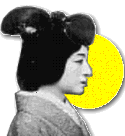
In Asia, tea is more than just a national drink. A symbol of welcome, the benchmark of hospitality, the hot, fragrant beverage is given special honor by the Japanese who call it o-cha, meaning "respected tea."
Once medicine, tea became a beverage, then more. Writer Kakuzo Okakura explained: "The tea ceremony is more than an idealization of the form of drinking— it is a religion of the art of life."
Sen no Rikyu (1521–1591), famous Japanese tea master, transformed the tea ceremony into the intimate gathering of modesty and refinement that it is today.
A respite from the busy and sometimes violent world outside, Sen no Rikyu's aesthetic rituals and gathering place evolved into the traditional tea room: small and simple, made of natural materials such as bamboo and wood, paper windows, and floor covered with tatami mats — mats of woven straw.
The mood is quiet, light is muted. Nonessentials are eliminated so that simplicity leads to clarity.
Part of the joy of tea was, and continues to be, taking it in surroundings to enhance the experience. Ralph Waldo Emerson said, "There is a great deal of poetry and fine sentiment in a chest of tea."

